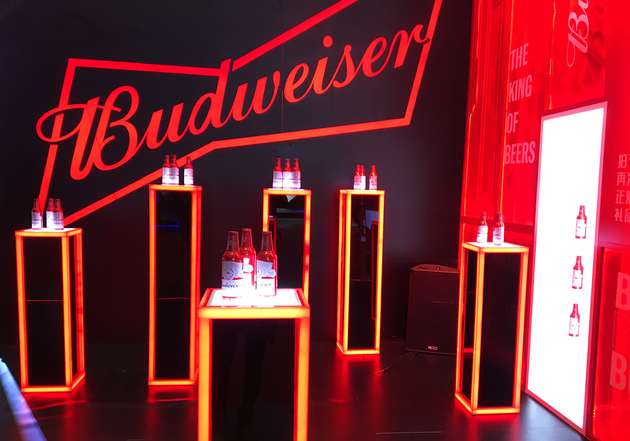
Photo/Chen Qixin
Feb.13 (NBD) -- Anheuser-Busch InBev, the world's largest brewer, is considering floating part of its Asian operations at the Hong Kong stock exchange in a bid to raise more than 5 billion U.S. dollars, reported Beijing Business Today.
It's noticed that only three IPOs on Asia exchanges topped that amount last year, namely China Tower Corp, Xiaomi Corp and SoftBank's Japanese mobile unit. And the huge IPO might help to ease Anheuser-Busch InBev's shortage of money.
According to Bloomberg, the brewer is saddled with heavy debt after its purchase of SABMiller Plc for more than 100 billion U.S. dollars in 2016. In addition, it is hard to keep its revenue growing as consumption continues to decline in the markets including the U.S. and Brazil last year.
Therefore, the brewer must search for new growth drivers elsewhere.
It is worth noting that in the first half of 2018, its revenue in the Chinese market grew by nearly 6 percent year on year, presenting a promising market.
Actually, Anheuser-Busch InBev has long deemed China a vital market in its global expansion.
As early as 2015, Anheuser-Busch InBev increased its ownership in Chinese beer brand Pearl River to back the construction of the latter's craft beer production line.
In addition, the company has acquired several domestic craft beer makers in China, such as Boxing Cat Brewery, and established a production line in Central China's Wuhan. In 2017, it teamed up with e-commerce giant T-Mall and JD.com to tap young users and shift focus to high-end beer with higher price for each bottle.
Last August, it joined hands with charging bank Energy Monster so as to tap the potential of the consumption scenario of night club. In January this year, Jan Craps, zone president for the Asia Pacific Zone came to China and secured the distributing right of German beer Blue Girl in mainland China.
After all those efforts, it has made a strong presence in China. Currently, it has gained a market share of 15.81 percent in the Chinese beer market, closely following China's Tsingtao Brewery and CRB.
Despite that, there are still dangers lurking behind.
According to statistics from industry information provider www.chyxx.com, the annual output of beer in China has begun to fall since 2014 and the consumption presented a similar trend. The waning overall demand of beer has something to do with an aging society of China, which resulted in fewer youths in the country.
Moreover, it still faces fierce competition both from domestic and international players such as Denmark's Carlsberg and Netherland's Heineken in the Chinese market. And many of them have launched their high-end beers.
Industry analyst Zhu Danpeng said that despite great pressure, Anheuser-Busch InBev has gained a foothold in China in terms of brand image and market share. With the changing consumption behavior of the 1990s and 2000s generation, alongside so many years' efforts in brand building, distribution, customers relations and team building, the brewer has a chance to stand out in the Chinese market.
Email: tanyuhan@nbd.com.cn


 川公网安备 51019002001991号
川公网安备 51019002001991号





